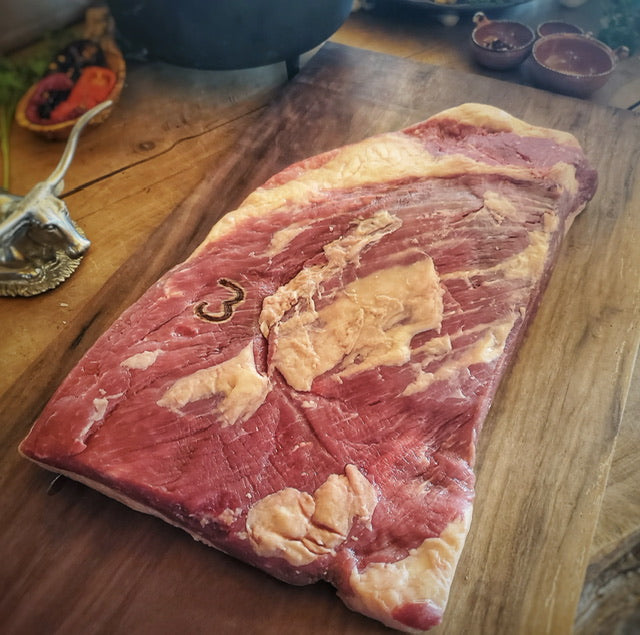
My Plans for Curing a Brisket
This is going to be my first year trying out a corned beef recipe for St. Patties Day, well except the one time long before I knew the importance of where the meat comes from and I bought a pre seasoned and brined one from Wal-Mart. Cameron wasn’t much of a fan, but I am confident he will like this one!
So much flavor comes from the meat and I know our briskets will have a lot more flavor then the grocery store one. It will still be a bit of an experiment for me though, so I will let you know how it goes!
I want to share my research I have done on the process, so if you want to experiment with me, you can. Or many your an old pro and have some tips for me.
To get the pink color you have to put the brisket in a mixture of curing salts, spices, regular salt, sugar, and water for 5 days. The pink comes from the curing salts, aka pink salt, that is sodium nitrate that is dyed pink so that it wouldn’t be mistaken for table salt (it is not Himalayan pink salt).
There is also a natural way of curing meat with celery salt or juice that has high amounts of nitrates naturally.
Sodium nitrate meat curing is a traditional method of meat preservation that involves the addition of sodium nitrate (or its related compound, sodium nitrite) to meat. Sodium nitrate is a chemical compound that inhibits the growth of bacteria and other microorganisms that cause spoilage and foodborne illness. When sodium nitrate is added to meat, it reacts with the meat proteins to form a pink color and distinctive flavor. This method is commonly used in the production of cured meats like bacon, ham, and salami.
Natural curing with celery salt, on the other hand, is a way to avoid the use of synthetic chemicals like sodium nitrate. Celery salt is a natural source of nitrates and nitrites, which are similar to the chemical compounds used in sodium nitrate meat curing. When celery salt is used to cure meat, the nitrates and nitrites react with the meat proteins to produce a pink color and flavor that is similar to traditional cured meats. This method is commonly used in the production of "uncured" or "natural" meats.
The main difference between these two methods is that sodium nitrate meat curing involves the addition of a synthetic chemical compound to the meat, while natural curing with celery salt relies on the natural nitrates and nitrites found in celery salt. Some people prefer the natural curing method because it avoids the use of synthetic chemicals, while others prefer the traditional method because it has a longer history of use and is well-established in the meat industry. Ultimately, the choice between these methods depends on personal preferences and the specific requirements of the meat product being produced.
There is a lot of debate on if natural nitrates are actually any different then the synthetic ones. There’s not enough research to really say for sure.
For us personally, I do back and forth all the time. I think no matter the nitrate, you probably shouldn’t be over consuming any cured meat. We don’t eat a lot of cured meat so I am okay with using synthetic nitrates and having our bacon and hams cured in it.
I did however find recipes for both ways of curing that I am linking below! So you can decide for yourself what you would like to try.
And of course, check out our briskets to make sure your corned beef has the best flavor this St. Patrick’s Day!
